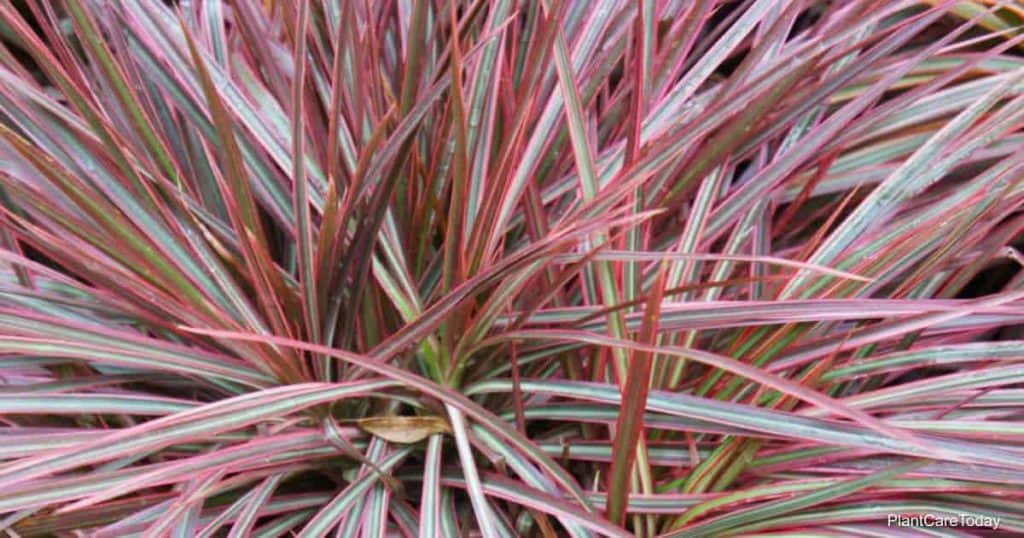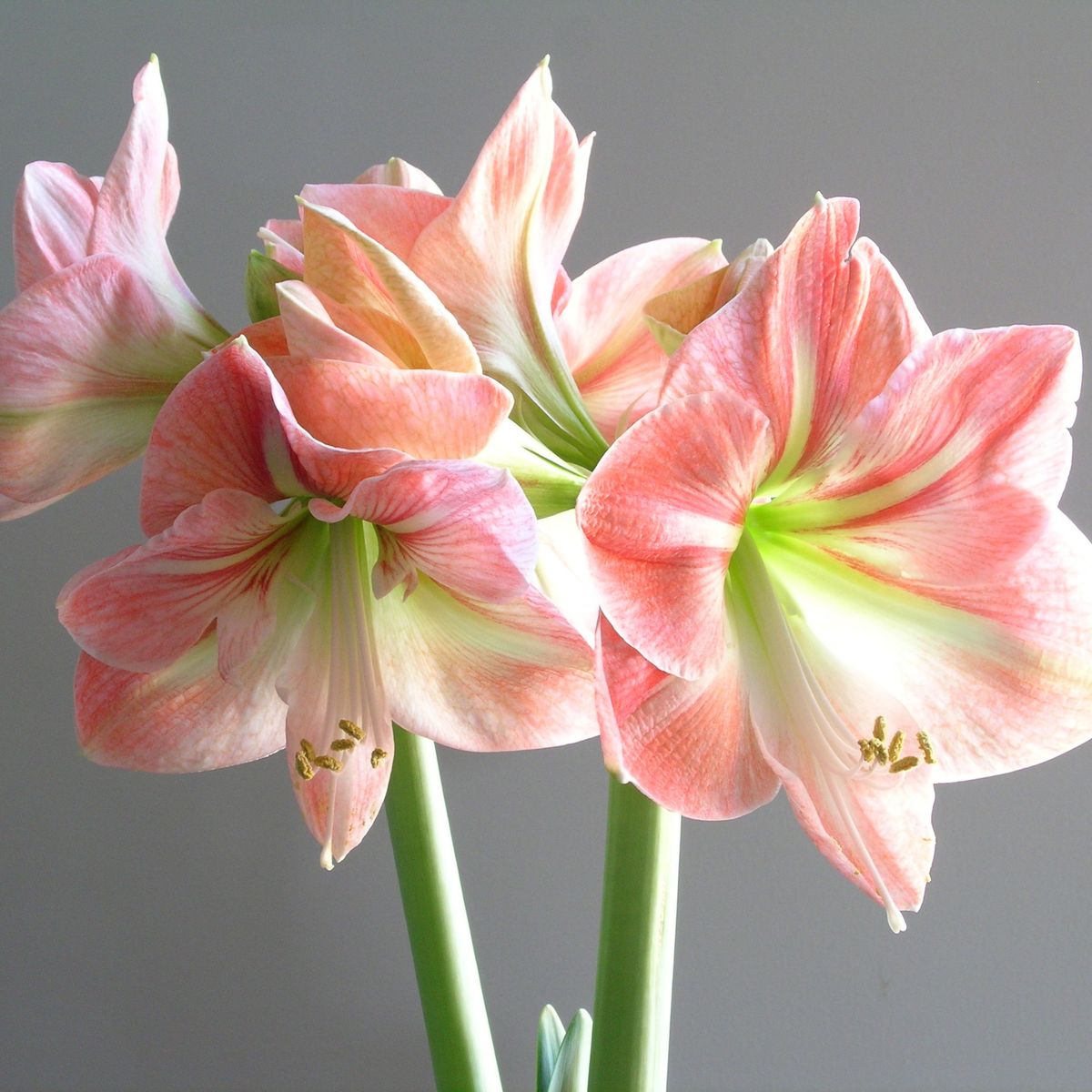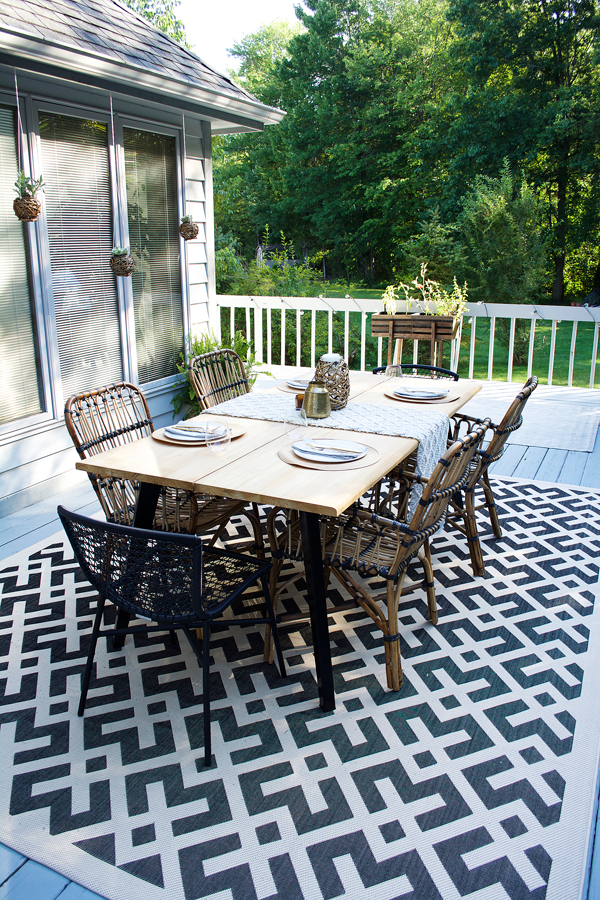There are several varieties of Dracaena marginata (dra-SEE-nah mar-jeh-NAH-tuh), yet few as striking as Colorama.
This broadleaf evergreen perennial shares the Madagascar dragon tree’s common name with its kin. But its unique coloration makes it stand out among its green-leafed forebears.
As with other Asparagaceae family members, dragon trees bring a taste of Madagascar and the Mauritius Islands to your home. They provide something both exotic and easy to maintain.
Dracaena Colorama Care
Size & Growth
As with all Dracaena marginata plants, Colorama grows vertically on a sturdy central cane. Its long, narrow leaves spread outwards.
While capable of a total height of 15′ – 20′ feet and a width between 3′ – 10′ feet, owners usually keep the plant pruned to a height of 6′ feet or less.
Colorama is a slow grower compared to its relatives and contains less chlorophyll.
Its variegated leaves have white and pink stripes along the green.
The more indirect sunlight it gets, the pinker its leaves become until the green is barely noticeable.
Flowering & Fragrance
While it’s possible for Colorama to bloom, it’s not common and can be extremely rare in indoor settings.
Light & Temperature
Most Dracaena plant varieties prefer medium, indirect light conditions. Colorama needs brighter light to maintain its foliage color.
Place it in a sunny room away from direct sunlight. Or put it in a slightly sheltered spot in your garden where it will receive dappled sunlight.
Colorama will grow outdoors in USDA hardiness zones 10 to 12.
Shelter both indoor and outdoor plants from sudden drafts. They also prefer temperatures between 65° and 80° degrees Fahrenheit.
Please do not expose your dragon tree to temperatures of 60° degrees Fahrenheit or below.
Watering & Feeding
Give your dracaena plenty of water when the soil is dry 2″ – 4″ inches from the surface. Allow the excess to drain out of the container.
Water once every 1 to 2 weeks. Decrease the frequency between October and March when the plant goes dormant.
This plant isn’t drought-tolerant, and the majority of health issues it faces are a result of overwatering or underwatering. It’s very obvious if you’re not watering it properly.
Yellow leaves are a sign of dehydration, while brown leaf tips appear when the plant gets too much water.
Colorama, like all dragon plants, is very sensitive to chlorine, fluoride, and other chemicals often found in tap water. Exposure to these chemicals results in the leaves developing brown or yellow margins. Dracaena can experience fluoride toxicity.
Try to use distilled water instead when watering indoor plants.
Learn Why You Should Use Distilled Water for Plants
Dragon plants prefer moderate humidity, provided through regular misting or a pebble tray.
Avoid getting the leaves wet if your outdoor plant is at risk of exposure to direct sunlight, as this may cause leaf burns.
You don’t need to provide a lot of plant food for Colorama. It can actually be easy to give them too much, resulting in fertilizer burn.
A good rule of thumb is to feed your Dracaena marginata right after watering. Use a standard liquid fertilizer diluted to half-strength every two weeks from late March through summer.
If you’ve repotted the plant or have recently purchased it, you will not need to feed it.
Soil & Transplanting
Dragon trees are well-suited for standard potting soil, but it’s best to use a 50/50 mix of loamy soil and peat moss.
This provides the plant with a well-drained soil that provides most of its food and easily maintains a preferred pH balance of 6 to 7.
Repot your dragon tree every two years, using a container one size larger each time, until it has achieved the desired height.
Ensure the new container has adequate drainage holes and a means for excess water to drain away from the roots.
Grooming & Maintenance
While it isn’t necessary to groom your Colorama, the plant is receptive to shaping, allowing you to make a rather unusual bonsai creation.
Cut down the plant’s top to the desired height to prevent it from hitting the ceiling. New growth will appear after a few weeks.
Read: Can You Cut The Top Off a Dracaena?
As new growth forms, it’s not unusual to see some of the older growth lower on the plant begin to yellow or brown. Prune it away or allow it to fall off on its own.
Be sure to collect any fallen leaves, so they don’t attract pests.
How To Propagate Dragon Plant
Propagation is easy using stem cuttings.
The best time to propagate is when you prune the top off of your plant, but you can create clippings at any point.
Make sure the clipping has at least two nodes, and trim off the lowest leaves.
If you plan to transplant straight into soil, allow the cutting to dry for about an hour and plant the base in dampened soil.
You may also choose to put the cutting in a jar of water, submerging the lowest nodes.
New roots will begin growing after a few weeks. Transplant the new plantlet into soil once the roots are 1″ inch long.
This method is excellent for the winter months. The sluggish plant will take a couple of months to grow adequate roots, allowing you to transplant in early spring to a garden or container.
Colorama Pests Or Diseases
Your dracaena plant is resistant to most bacterial and fungal infections, although it’s prone to root rot if overwatered.
The most common insect problems tend to involve:
Details on: Bugs That Attack Dracaena Plants
This plant’s leaves are toxic to humans and pets and contain alkyds that are incredibly toxic to cats.
Symptoms of ingestion include excessive drooling, mouth and stomach irritation, and vomiting.
Related: Why Are My Dracaena Leaves Turning Yellow?
Dracaena Marginata Colorama Uses
This plant’s unique way of growing on a vertical stalk is perfect for filling corners and spaces behind furniture.
This dracaena variety stands out due to its variegated leaves and is best suited for a sunny location.
Dracaenas are in NASA’s database as effective air purifiers.












